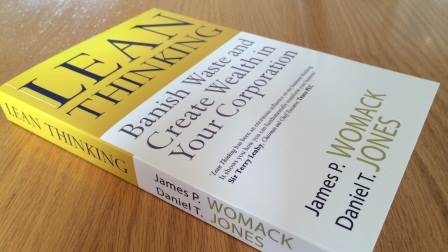It is a mistake to think of lean as just one of the many tools in the Operational Excellence portfolio. Operational Excellence is really a catch all label for many different “best practices”. Lean on the other hand is a very specific set of interlocking practices, tools and behaviours derived from a very clear reference model. Lean grew out of years of practice and experimentation at Toyota and at companies in other sectors that have followed their example. It did not come from applying theoretical insights to business practice.

Correctly understood, lean is a much more fundamental and comprehensive approach to solving business problems and creating value for customers. It is also a great deal more than engaging employees in continuous improvement and eliminating waste.
One of the key things that distinguishes lean is its scope – which encompasses the whole value creation process – such as a global supply chain or an end-to- end patient journey. Instead of developing new support systems – such as better forecasting or decision support systems – lean focuses on the actual work that creates the value customers pay for, which lean thinkers call value streams.
Lean brings many different tools to bear so each value creating step can be performed right first time on time, then links the steps together in a physical flow or through pull signals and then levels the workload to align capacity with demand. As the primary value creating work begins to flow lean applies these tools to synchronise all the supporting activities that enable the primary value stream to flow and all the elements a customer needs to solve their problem – such as the test results, medications and therapies for a hospital patient. This in turn requires the right lean management to ensure the work can flow according to plan, to escalate issues and unblock obstacles to flow and to support root cause problem solving.
The net result is a value creation system designed back from the customers’ definition of value and around the activities that create this value, more accurately and with far less wasted effort and cost. While most organizations cut their teeth leaning their existing activities the true potential of lean comes from the opportunity to redesign the next generation products or services and the value streams that deliver them without the drag of existing assets. Manufacturers are for instance now looking to local rather than distant “low wage” suppliers and polyclinics are now offering services previously only available in big district hospitals.
The other thing that distinguishes lean is its depth. The more activities are linked together and synchronized and the physical or time buffers between them are removed the more the operation of the whole systems depends on the skills, behaviours and direction of every employee.
On the one hand such an integrated system multiplies the probability of interruptions that must be responded to quickly. On the other hand it provides extremely valuable feedback on the causes of these interruptions and other changes, which may otherwise be hidden or lost. It is precisely to leverage this feedback that the core lean skills are not just the tools and techniques, but the use of the scientific method to define and diagnose a problem, understand the facts, try several countermeasures and check which of them solved the problem. Because solving problems can only be done by combining a detailed knowledge of the work with the context of the problem these skills need to be learnt by every employee, not just the experts. Developing these skills and using this experimental approach to constantly improve the performance of each value stream is learnt by doing rather than in a classroom.
In order to enable value streams to flow across facilities, departments and organisations someone has to take responsibility for creating the conditions for collaboration between all the actors involved. Lean chief engineers, project managers and value stream managers carry the responsibility for the performance of their product, project or value stream while the authority over the resources needed to accomplish this remains with vertical department of function heads. The keys to making this work are agreeing the right metrics for tracking the operation and performance of the system as a whole and creating the right visual management context in which to gain agreement from all parties on the facts of the current situation and to commit to a jointly agreed plan going forward. The team then reviews deviations from the plan very frequently, unblocks any obstacles and captures any learning for the future. Lean thinkers use visual management everywhere precisely because it reinforces collaborative behaviours.
Highly transparent and interdependent systems throw up literally thousands of possible things that could be improved across an organisation. The skill of a lean leader is to be able to set the direction and to focus everyone’s efforts on the vital few things that will make the biggest difference to the organization, its customers, employees and shareholders. This means being able to translate organizational goals into measurable gaps that need to be closed and using strategy deployment to create a dialogue down the organization to agree the actions that will contribute to closing these gaps, so these can be adequately resourced while others are deselected. It also means diagnosing and addressing the underlying causes of instability – such as the amplification of orders passed upstream or discharge delays causing queues for admission to a hospital. Finally leaders must act to use the freed up capacity or cash to reduce costs and grow sales without requiring additional capital.